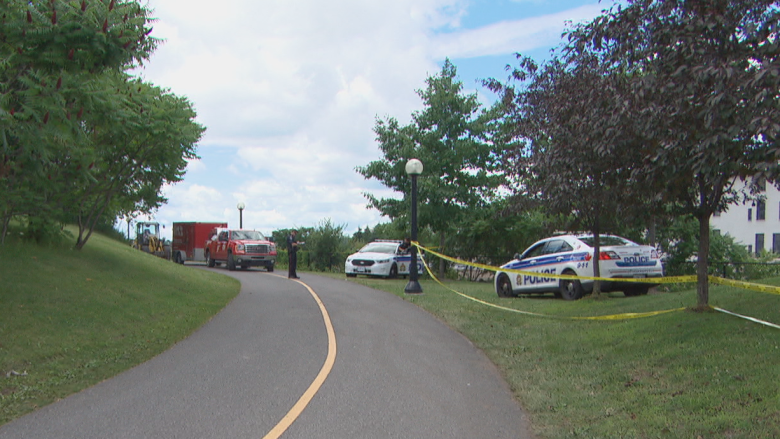Inquest into worker's death calls for stricter rules around reversing vehicles
A coroner's inquest examining the 2014 death of a construction worker in Ottawa has recommended stricter protocols for vehicles reversing at construction sites.
The jury recommended Thursday that construction vehicle operators and signallers be in constant communication at construction sites, and that operators stop immediately if they lose visual contact with their signallers while reversing.
The mandatory inquest was launched following the death of Réjean Bernier on July 17, 2014.
The 61-year-old was attempting to guide a co-worker reversing a pickup truck and covered trailer along a narrow section of pathway behind the Canadian War Museum. Bernier was struck by the back of the trailer and became pinned under it.
Despite the efforts of nearby construction workers who rushed to free Bernier using a forklift, the Montmagny, Que., resident was later pronounced dead in hospital.
Signallers stationed on pathway
The three-day inquest heard how Bernier and his co-worker had been attempting to back up the truck and trailer from Booth Street to a construction staging area 150 metres away.
The multi-use path was still open to pedestrians and cyclists at the time, with signallers stationed at both ends to stop people from passing through while construction vehicles were on the move.
However the pathway was curved, so signallers couldn't always see each other, though they were in radio contact.
Bernier exited the pickup at Booth Street and began walking behind the covered trailer, which was roughly the size of a minivan.
His job was to help the driver avoid objects and obstacles along the pathway.
A third of the way to their destination, Bernier spotted a cyclist who had stopped at a bench to admire a nearby heron.
It's believed Bernier then passed directly behind the moving trailer, at which point the driver lost sight of him. Bernier became pinned under the trailer. The cyclist was uninjured.
Driver, victim were best friends
Five jurors heard testimony from 11 witnesses including the signallers working that day, an Ottawa Police collision reconstruction detective, an ergonomist with the Ontario Ministry of Labour and the driver of the pickup truck, who was best friends with Bernier.
Following an hour of deliberations, the jurors issued their recommendations with the goal of preventing a similar incidents.
The jury is not allowed to assign blame or make any legal determinations.




